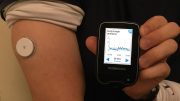By Alison Houghton, Progress
The term “innovation” is fraught with nuance and means different things to different segments of healthcare. Leonardo da Vinci wrote: “Simplicity is the ultimate sophistication.” Ironically, for some healthcare segments, innovation could be akin to a caterpillar metamorphosizing into a butterfly and for others, it could be a phoenix rising from the ashes. What healthcare innovation looks like will be determined on what problems healthcare organisations are attempting to solve and what outcomes they need to deliver.
Innovation Can Start with Basic Issues
If we look at patient no-shows, it does not seem like a sophisticated problem that would require innovation. However, available data demonstrate that patient no-shows can impact clinical workflows and delay patient diagnosis. For the last several years, many organizations have used a variety of DIY solutions to tackle patient no-shows and while some of these methods have improved patient appointment adherence —phone calls, emails, and SMS — most of these DIY methods create patient fatigue and new cycles of non-adherent patient behavior. Can something as basic and simple as getting patients to their appointments be innovative? With a growing population of chronically-ill patients, who present with multiple comorbidities, reducing patient no-shows is crucial for the long-term health of chronically ill patients as well as the overarching health of society.
Healthcare has a prodigious amount of information on patient appointments, but that information is frequently decentralised or housed in siloed databases that bring little value to organisations that are aiming to improve the patient experience and drive adherence. Although, there are numerous solutions that are available to remind patients to attend clinic, most of these solutions are not context driven. Additionally, most of these solutions don’t predict if, when, and why a patient does not attend their clinical appointment.
In truth, healthcare innovation is a craft cocktail that is one-part behavior modification and two-parts readiness and willingness to change. Sometimes innovation can simply be about elevating an endemic problem with a new tool kit of options that enhances clinical workflows, improve patient outcomes, and drives operational efficiency. For example, identifying, predicting, and prioritizing adherence workflows is sophisticated innovation.
The Role of Machine Learning
Machine learning (ML) coupled with the integration of different data sources and real-time data can help healthcare organizations create innovative, personalised strategies to improve patient adherence, such as understanding what external factors – weather and child care needs, etc. —impact patient no-shows. By automating and aggregating data, healthcare organizations can create patient model types to determine how best to get patients to keep scheduled appointments and when to overbook patient appointments to avoid care coordination scheduling gaps. Moreover, organisations can use patient appointment data to maximize clinical workflows by strategically triaging staff based on patient needs and staff expertise.
A Roadmap for Healthcare Innovation
To drive innovation simplicity, healthcare entities:
- Need to identify a problem they need to solve.
- You know your institution better than anyone else. By identifying the problem that you need information technology (IT) to solve, you will be making IT spending decisions based on a real-world fit for your organization’s long-term and short-term objectives, not a one-size-fits-all approach.
- Identify the outcomes that implementing the IT solution or platform should deliver.
- Knowing what outcomes need to be achieved will save you time, money, and reputation. Innovation for the sake of “cool factor” credentials is not innovation. What is cool and trendy today might be dated or obsolete tomorrow.
- Work with IT companies that align with your mission statement. Some questions you might want to ask include:
- Is this company investing in technologies specific to healthcare or they repurposing solutions from other verticals to be applicable in healthcare?
- Has the company hired individuals with deep healthcare experience and expertise?
- Is this company truly vested in healthcare and have a product roadmap to demonstrate their commitment?
IT solutions and platforms are a catalyst that can drive operational efficiencies and improve patient outcomes, but each healthcare entity will need to determine how they need to innovate.





